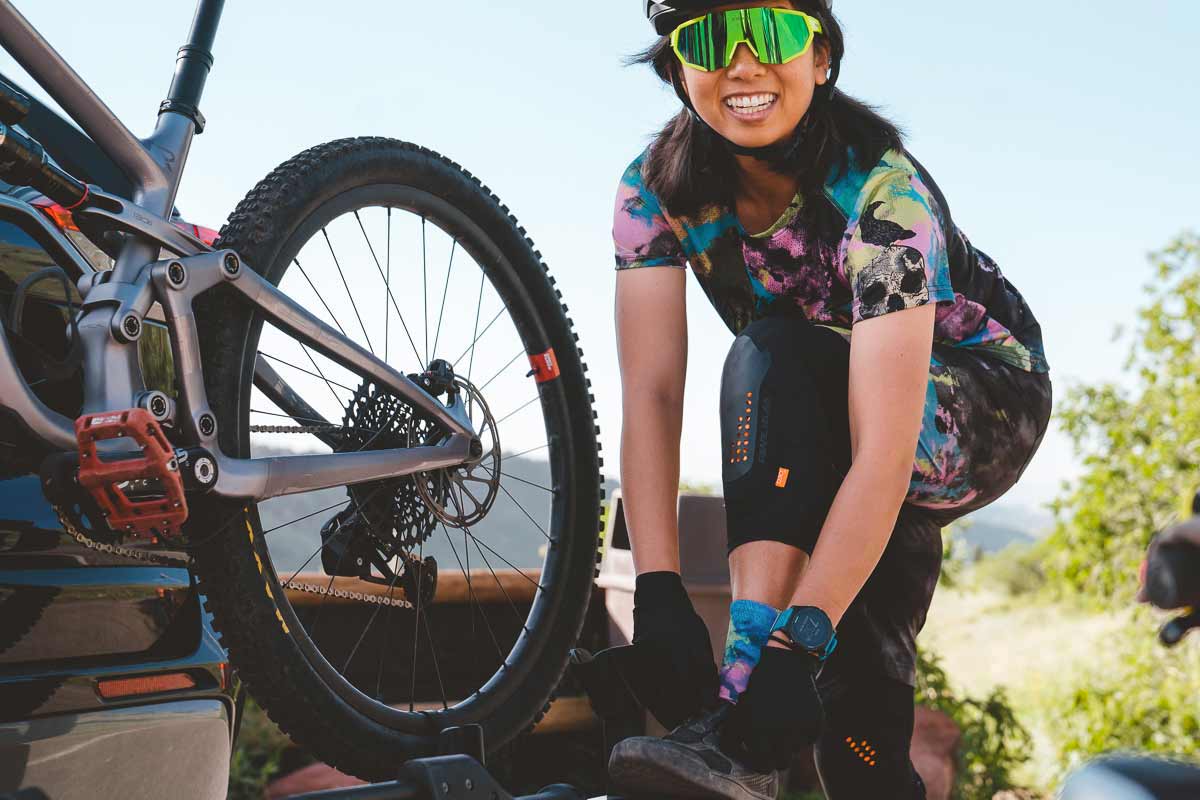If you’re purchasing a pair of bike shoes for the first time, you probably have a lot of questions. Do cycling shoes run true to size? Should they fit snug, or should you buy them with some room in case your feet swell from riding? What if you have wide feet—do they offer wide options? And what the heck is my EU size?
Are bikes shoes true to size?
When deciding on what size bike shoes to purchase, go with your everyday shoe size, as bike shoes tend to run true to size. That said, if you’re normally in between sizes, for example: sometimes you go with an 11 and sometimes a 11.5, it’s recommended that you size up. Your foot can swell throughout the day and your foot size changes.
Even hydration throughout the day can change the size of your feet. Plus, unless you’re planning on racing, having a little extra room in your shoe won’t affect your riding.
Should bike shoes fit snug?
It’s suggested to size up if you’re between sizes, it's important ot keep in mind cycling shoes are intended to wrap snuggly around the foot.
Similar to how running shoes are created to help keep you comfortable and enhance performance, bike shoes were also designed with a specific purpose in mind as well: pedaling. 99% of the time bike shoes are made to be used solely for pedaling.
Except for hike a bike up steep hills you’re not walking or running around in them. Unlike running or jogging, when you pedal you’re applying pressure to the ball of the foot instead of the toe area, so it’s lower impact, and doesn’t cause the foot to move around. Because of this bike shoes are designed to fit very close to the foot, almost like a second sock. This helps to minimize foot movement and create more stability. More stability means more power from the rider into the pedal and into the movement of the bike.

Shimano has taken over a million impressions of different foot shapes and has a good idea as to where the mass population fall, which has allowed them to build 12 foot-shaped lasts that they use to create their shoes.
Do bike shoes come in wide sizes?
Great new for those out there with wide feet: yes, an increasing number of brands now offer wide options in their cycling shoes. Shimano in particular is a favorite of ours for their wide sizing offerings.
Can you explain European sizing, and why are most bike shoes sized this way?
Cycling started out in Europe, so European sizing has remained the universal standard across the industry, particularly in the world of road biking where large, historic races such as the Tour de France remain incredibly popular.
American sizing is much more common in the world of mountain biking as the sport gained wider popularity in the 1970s in the western United States with many MTB bicycle brands headquartered there to this day.
The best way to figure out your size is use the bike brand’s size chart. Below is Shimano’s sizing conversion chart, but stay on the lookout when shopping other brands, especially if you are in between American shoe sizing.

What’s with the round dial?
That little round dial is the BOA adjustment on Shimano cycling shoes (and some other cycling brand’s shoes, as well). This handy mechanism allows you to get the most secure and comfortable fit possible. You can crank down the dial in small micro adjustments around the metatarsal area and if you need to make an adjustment while riding, it’s very easy to do so with the BOA system.
How do I attach my cleats to my bike shoes for the most comfortable fit?
Cleats have a little bit of a margin for error, which is also called "float." Float refers to the back-and-forth movement aka the amount that you’re able to point your toes left or right while you’re clipped in.
Shimano’s SPD pedals have 4 degrees of float, so you’re never locked into just one position. Shimano’s SPD-SL cleats have three float options, one that has six degrees of float.
Most people pedal slightly duck-footed with your toes pointed inward so you should point the cleat between your first big toe and your second toe when you attach it to the sole of the shoe.

The worst-case scenario is that you might experience some pain while riding. Typically either medial or lateral knee pain. When this happens you can adjust the cleat.
Decide where you want to rotate your foot, moving your heel in towards the bike or away from the bike and then adjust the bike cleat in the opposite direction of where you want the heel to be.
Try just one adjustment at a time and if you’re still having issues continue to tweak the positioning. If problems persist consider getting help from a bike fitter - stop into a Bicycle Warehouse location during your next service and we would be happy to offer some tips.






